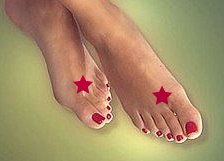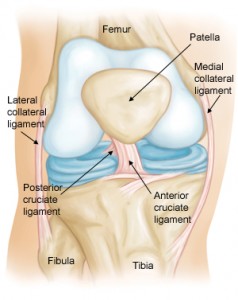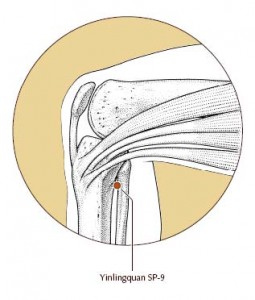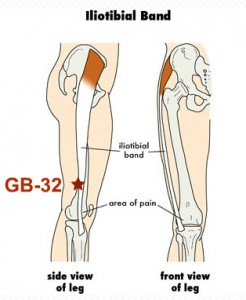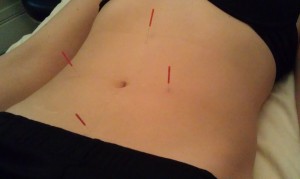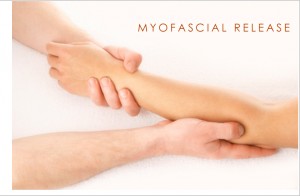The FIRST thing to know about Fibromyalgia is that it’s real.
The SECOND thing to know about Fibromyalgia is that it doesn’t have to be forever.
So many people, when they are finally diagnosed, have a bittersweet reaction. At last, they know what is wrong. They might feel vindicated, having endured the eye-rolls and boredom of family members who didn’t believe anything was really wrong. On the other hand, some patients take the diagnosis as a death sentence. They’ve heard nothing but a negative prognosis. They think they are stuck with the pain for the rest of their lives. Some people, exhausted and depressed, can even take on the disease as an identity. DO NOT do this. You are a beautiful person dealing with a temporary disease. There’s a Southern saying “If you’re going through Hell, don’t pitch a tent!” This is perfect advice. Resist the urge to wallow. Focus on the things you CAN do to make yourself better, and keep moving!
Everyone is different, of course, but I am here to tell you that most people CAN reduce or even eliminate Fibromyalgia symptoms. I used to be in a lot of pain… Now, as long as I am reasonable with my diet and exercise, my symptoms are very mild and very manageable! Let’s see how much progress we can make.
I see FM as a kind of physical Post-Traumatic Stress. Generally it can be traced back to a physical or emotional trauma. The body’s pain system becomes oversensitive. It reads any little insult as a major injury. To stop this over-reaction, we have to decrease inflammation, reduce stagnation, and decrease stress.
Sleep: See my article on Sleep. Letting your body restore itself overnight is very important!
Exercise: Light, frequent exercise is key to reducing pain. In severe cases, you may need to start with a 5-10 minute walk once a day. That’s fine… just gradually increase the duration. Get up and move a little every few hours instead of sitting still all day. If all you can do is make snow angels in bed, do that. Try to keep your activity levels about the same day to day. Doing too much or being too sedentary will hurt – listen to your body!
Nutrition: Making a few changes in your diet can drastically reduce your pain. Avoid the inflammatory nightshades (tomatoes, potatoes, eggplant, peppers, tobacco) as most people with FM tend to be sensitive to their natural alkaloids. This article contains full details and some recipes. Sugar is the other big offender. Some people are more sensitive to dairy products, commercial red meat, alcohol, and caffeine than others. It’s worth experimenting a little to find out how your body reacts. Go two weeks without the item in question, then have a big dose. See how you feel that day and especially the next. The answer is usually pretty obvious. If you’re ready/able to make big changes in your diet, you may find that eliminating starches (pasta, bread, rice, etc) can be surprisingly helpful. Alternatively, you can use a quick blood test to identify foods your body reacts to – I can do that in the office, so ask me if you have questions.
Try to eliminate fried and processed foods from your diet as much as possible. Anti-inflammatory foods like dark leafy greens and good fats are important to include.
Relaxation: Being happy is important, too. Pamper yourself by allowing time to read or pursue your other hobbies. Have fun! Enjoy a funny movie, hang out with your friends, pet a cat. Pay attention to the beautiful things in your everyday life.
Good touch: The hypersensitivity of fibromyalgia means that the wrong kind of pressure, even well-intentioned, can be very painful. Deep-tissue work and hard hugs are not appropriate. Instead, I use a gentle touch. I prefer myofacial release (MFR) and moxa as methods to break up stagnation rather than cupping for people with fibromyalgia. Cupping, especially if done too harshly, creates bruising / bleeding under the skin and contributes to excess inflammation. Careful medical massage techniques, including MFR, use a large contact (palm of the hand) instead of a pokey one (fingertips), and are wonderful for helping disperse blood and lymphatic stagnation. If there’s a partner in your life, I can teach them how to work on you. I am also conservative in my needling for FM patients. I use the skinniest possible (42 gauge) and just a few… too many can wipe out your energy.
Acupuncture: Acupuncture and Chinese medicine provide relief of symptoms by balancing Yin and Yang, and adjusting the circulation of Qi and the blood. A regular plan, with long-term, consistent integrative treatment is necessary in patients with fibromyalgia. See the patterns of FM as understood by Chinese medicine, listed below.
Address the cause: Most FM seems to stem from a past trauma, either physical or emotional. Many patients report a history of abuse. Find a good therapist or some other way to address any hidden grief. Some patients find it useful to write letters to people involved in these emotional injuries. Say it all. You can even write one to yourself (current you or younger you). It doesn’t matter if the person is still part of your life or if they are still alive – it’s about expressing yourself. Afterwards, burn the letter as a symbol of letting go of those emotions.
I can’t overstate the importance of this step. You may feel like you’ve dealt with whatever trauma kicked your FM off, but stop and think. Those land mines can be buried deep. In my case, I had to dig back to my sister’s death when I was 18, as well as the obvious car accident. Once I re-addressed my grief, the majority of my symptoms melted away. Take some time to find the splinters in your soul.
Keeping a daily diary that tracks your food, activity, and symptoms will help you identify patterns.
Keeping your identity as separate from a disease, and focusing on the actions you can take, is important for everything herpes to HIV. Some people with long-term managed illnesses, like diabetes or fibromyalgia, actually wind up healthier because they get serious about their diet and exercise. This life is what we make of it. Go make something awesome!
Common Typical TCM (Traditional Chinese Medicine) Patterns for Fibromyalgia
A person may exhibit more than one pattern.
Liver* Qi Stagnation – anxiety, emotional upset, headaches (including migraine headache), being easily angered, muscle stiffness in neck and shoulders, insomnia, waking frequently and having difficulty falling back to sleep, irritable bowel syndrome. All symptoms may be triggered by emotional stress.
Qi and Blood Deficiency – specifically spleen Qi deficiency and heart blood/liver blood deficiency, with such symptoms as chronic fatigue, exhaustion, dull headache, muscle weakness and numbness, insomnia, dream-disturbed sleep and waking up tired, palpitations and depression.
Qi Stagnation and Blood Stasis – aches and pains in the whole body, burning or gnawing pain with tingling sensations in extremities, headaches.
Kidney* Deficiency (either Yin, Yang, Qi or Essence Deficiency) – there will be impotence, lack of libido, or infertility issues. Other symptoms: sore lower back with restless leg syndrome, irritable bladder, dysmenorrhea, amenorrhea, premenstrual syndrome, hot flashes and night sweats.
* Please note that the Chinese organs are energetic concepts and may or may not relate to the physical organs!

